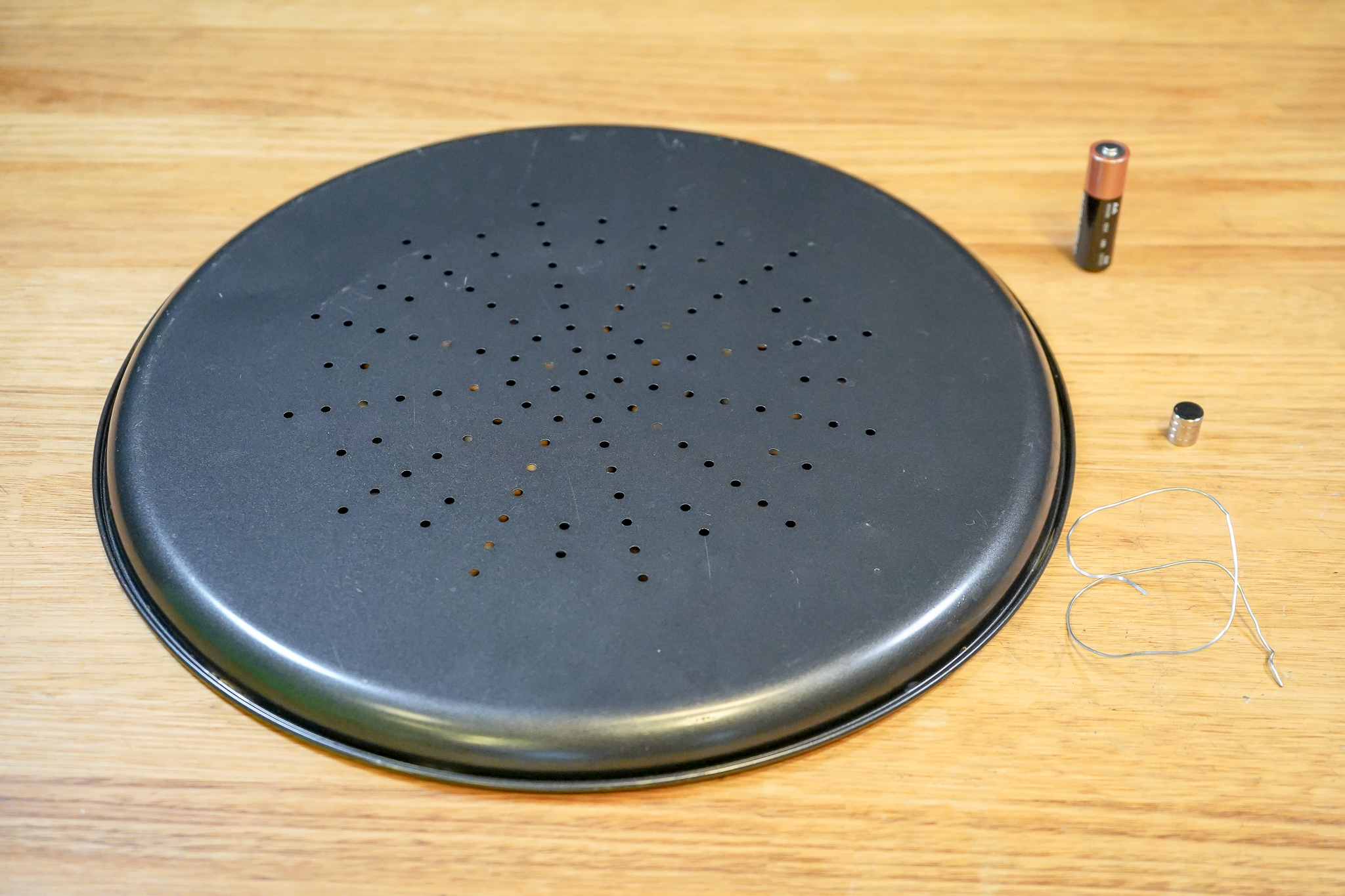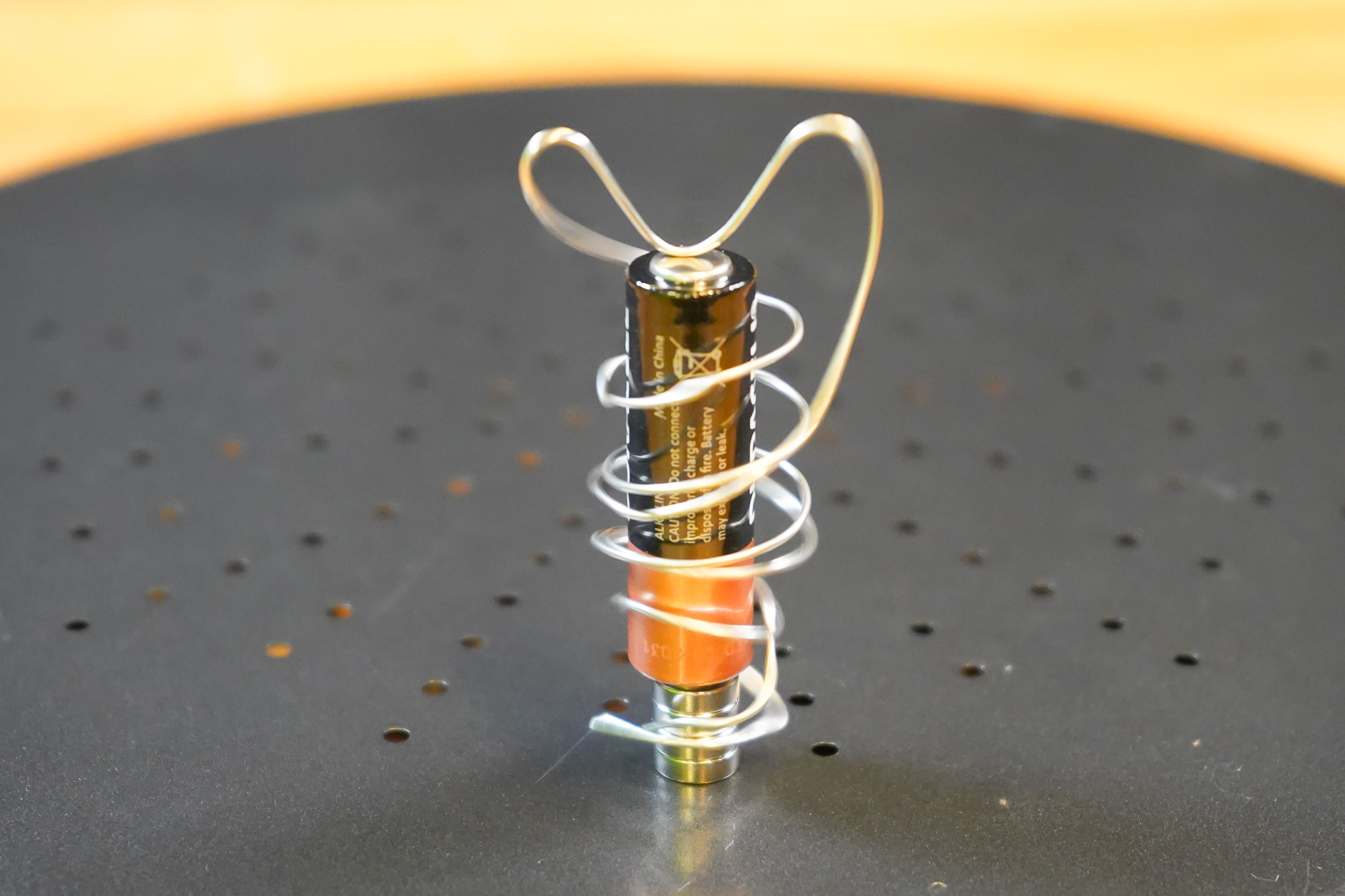You'll need
- About 20 cm of tinned copper wire (enamelled copper wire doesn’t work)
- 1 AA battery
- 4 small round rare-earth or neodymium magnets
- A metal baking tray
- Pliers

What to do
The aim is to balance and spin a coil of wire on the battery and magnets. Moulding the wire to touch the battery and magnets can take a bit of practice, so don’t give up if it doesn’t work first time!
- Wrap the wire loosely around the battery into a spiral. Leave about 5 cm free at one end. Bend the free end into a ‘V’ shape. The bottom of the ‘V’ should be in the centre of the spiral. This is the point that the wire will balance on the battery (pictured at the top of image).
- Carefully stack the magnets on the metal baking tray. Be careful not to pinch your fingers between the strong magnets and the baking tray.
- Place the wire on the battery so that the end of the ‘V’ is balanced on one end of the battery.
- Carefully place the other end of the battery on the magnets on the baking tray.
- Bend and adjust the tinned copper wire spiral so that it is touching only the top of the battery and the magnets at the bottom.
- Adjust the wire spiral until it starts to spin! It can take some trial and error to get the wire spiral balanced so that it spins freely without falling off the battery.

Questions to ask
What happens if you flip the battery over so that the other end is connected to the magnet at the bottom?
Does it work with other sizes of battery?
What happens if you use a longer piece of wire?
Can you make different shapes that spin?
What's happening
This experiment works the same way as the other electric motors we rely on every day! It uses the relationship between electricity and magnetism to make movement.
When you connect the wire to the battery, electricity flows through it. The negative end of the battery has lots of electrical charges all bunched up. The charges want to move to the positive end where there is more space to spread out. Connecting the copper wire creates an easy path for the bunched up electrical charges to flow from the negative end of the battery to the positive end.
Electricity and magnetism are two sides of the same coin – where there’s one, there’s the other! When electrical charges move through the wire, they create a small magnetic field around the wire. Neodymium magnets are surrounded by their own stronger magnetic field, which pushes against the magnetic field of the wire. The pushing force between the two magnetic fields makes the wire spin around the battery and the magnet! This same mechanism is used in all the electric motors that move the marvellous machines that we use every day!
Did you know
An electric motor converts electrical energy into mechanical energy. Electric motors can be found in many of the technologies we rely on every day - like in fans, microwaves, blenders and electric toothbrushes. Not all electric motors use electricity to make something spin. The voice coil that makes a speaker vibrate back and forth to create sound is a type of electric motor!








